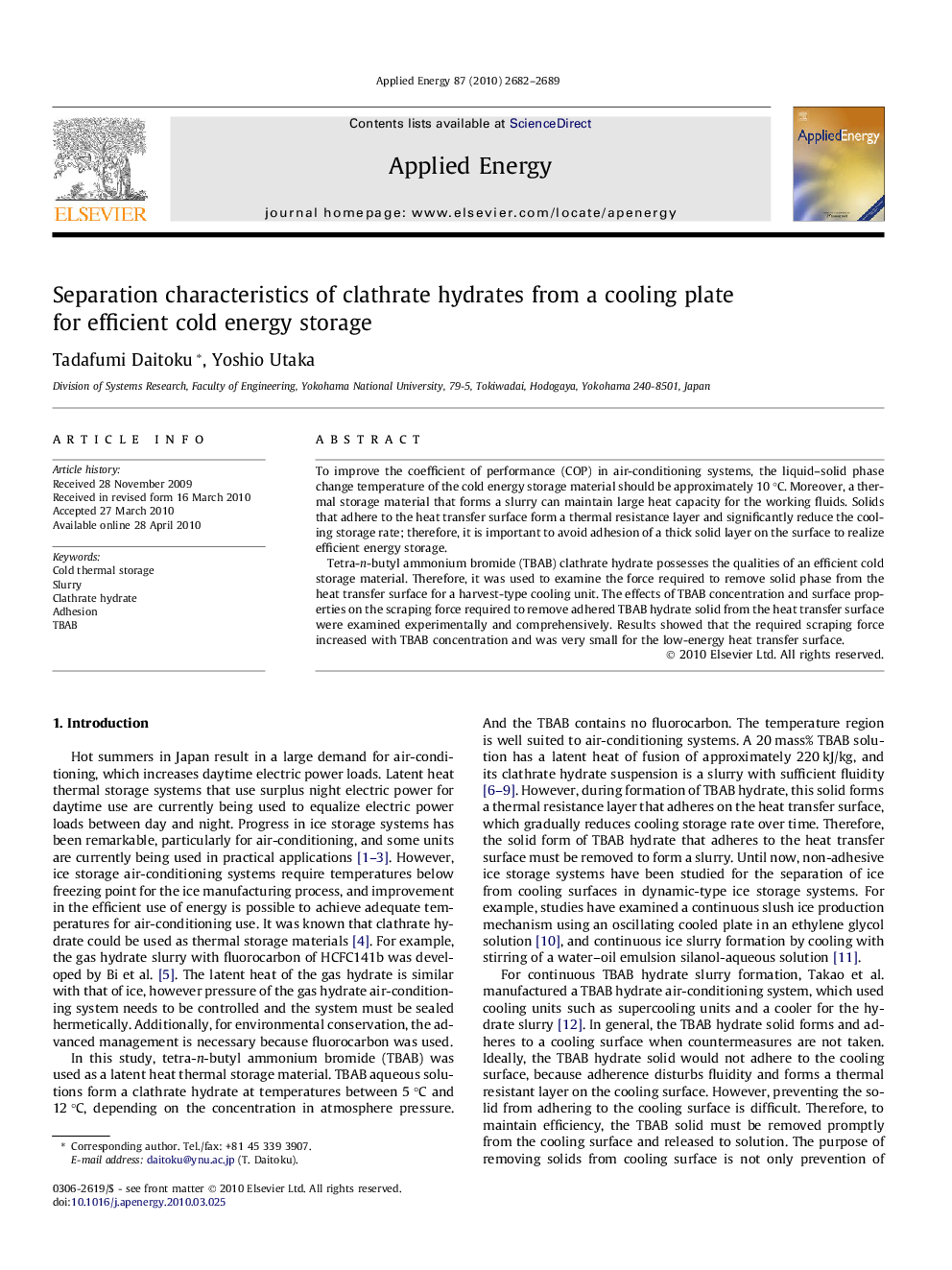| Article ID | Journal | Published Year | Pages | File Type |
|---|---|---|---|---|
| 244352 | Applied Energy | 2010 | 8 Pages |
To improve the coefficient of performance (COP) in air-conditioning systems, the liquid–solid phase change temperature of the cold energy storage material should be approximately 10 °C. Moreover, a thermal storage material that forms a slurry can maintain large heat capacity for the working fluids. Solids that adhere to the heat transfer surface form a thermal resistance layer and significantly reduce the cooling storage rate; therefore, it is important to avoid adhesion of a thick solid layer on the surface to realize efficient energy storage.Tetra-n-butyl ammonium bromide (TBAB) clathrate hydrate possesses the qualities of an efficient cold storage material. Therefore, it was used to examine the force required to remove solid phase from the heat transfer surface for a harvest-type cooling unit. The effects of TBAB concentration and surface properties on the scraping force required to remove adhered TBAB hydrate solid from the heat transfer surface were examined experimentally and comprehensively. Results showed that the required scraping force increased with TBAB concentration and was very small for the low-energy heat transfer surface.
